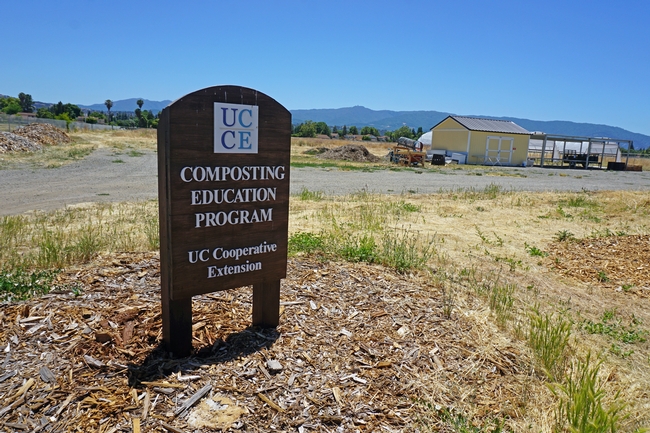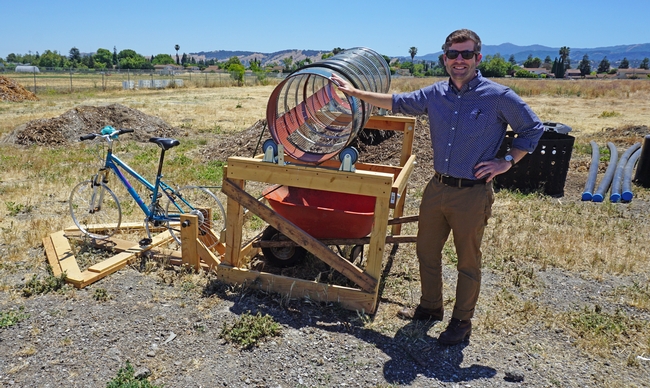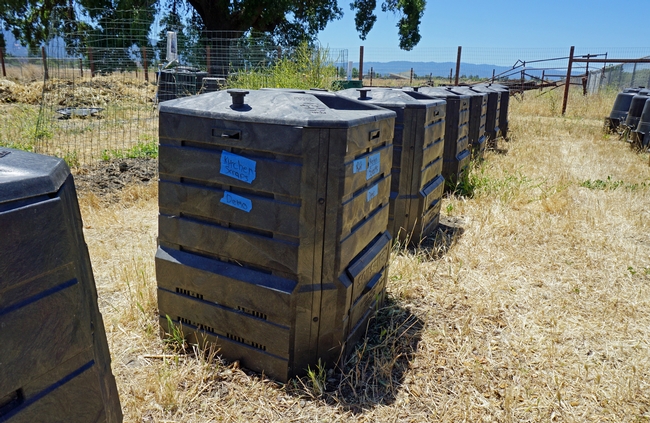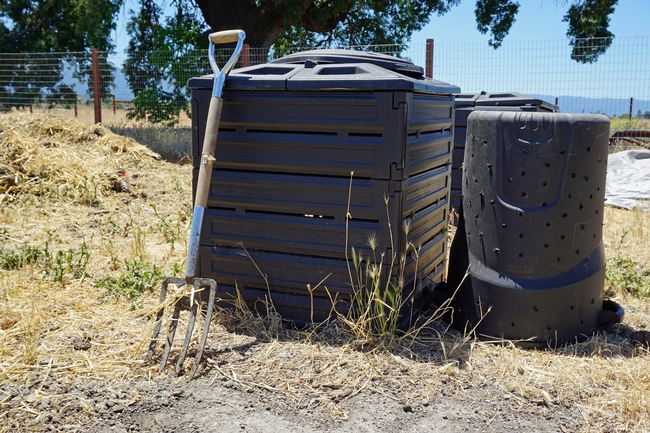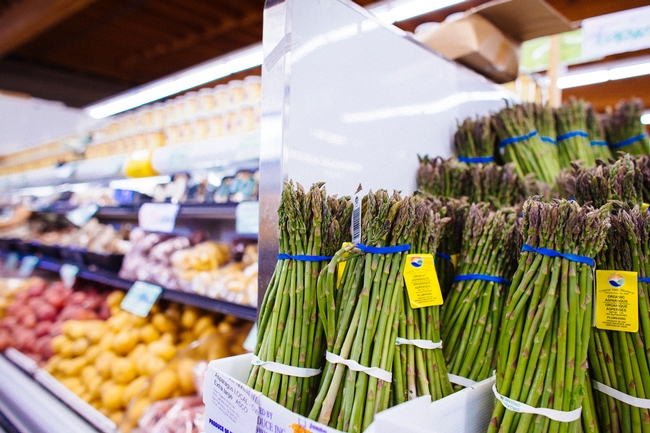
Posts Tagged: Wendi Gosliner
Study: Government shutdown stressed food assistance program participants
A U.S. federal government shutdown can represent a minor inconvenience, a delay in paychecks, or – for people living in some of the most difficult circumstances – an extended period of hunger and anxiety.
A study published recently in the journal Nutrients provides a unique glimpse into the shutdown experiences of participants in CalFresh – California's name for the federally funded Supplemental Nutrition Assistance Program (formerly known as food stamps). Currently, about 42 million people participate in SNAP across the U.S.
In focus groups conducted in 2019 with 26 low-income CalFresh participants from four diverse California counties, participants shared how the 2018-19 federal government shutdown affected their SNAP benefits, their perception of the program and their faith in government.
One of the immediate effects of the 2018-19 shutdown was that February CalFresh benefits were distributed in January. And while that meant program participants saw extra benefits that month, they then had to wait 40 to 44 days until the March issuance – much longer than the usual 28 to 31 day cycle.
“What we saw with this study is that this extended lag in benefit receipt from January to March was devastating,” said Wendi Gosliner, senior researcher and policy advisor at the Nutrition Policy Institute of UC Agriculture and Natural Resources, and an author of the study funded by UC ANR.
She recalled one participant who, despite having a gastrointestinal issue that requires a special diet, had to eat canned food from the food bank that made her sick – rather than go hungry while waiting for her March benefits. Others described cascading financial challenges after using rent money for food in February, or going into debt to pay for food and getting behind on other expenses.
The study also chronicles the experiences of a woman who was anguished to hear the suffering of her daughter, also a CalFresh participant: “She called me several times crying, ‘Ma, I don't – we don't have enough food. What am I going to do…? You know, I can't afford to this and this and this.' And I can't help her.”
For individuals grappling with food insecurity, the stress of feeding their families was compounded by the uncertainties of the government shutdown. And while many participants exercised their agency and resourcefulness in coping with the situation, they also felt a degree of powerlessness amid the “confusion and craziness,” as one person put it.
“No one knew how long that shutdown was going to last; no one knew if the March benefits were going to be paid,” Gosliner said. “And as we learned, there were all kinds of stories circulating out there about what was going on with the uncertainty – a lot of people didn't have the information about what was actually happening.”
Some participants, seeing the “double benefit” in January 2019, thought that it was the last-ever distribution and that SNAP was ending. Others described being unable to get in touch with the CalFresh agency to get their questions answered about the benefits. Most participants had not heard about the disrupted benefit schedule before receiving the benefits. As a result, many people in the focus groups shared that their overall faith in government had been shaken.
Improving customer service, boosting benefit levels and adjusting eligibility and benefit formulas to reflect high cost-of-living and expenses related to working were three recommendations that came from the focus group participants.
A fourth recommendation tackles the shutdown issue head-on: Don't let it happen again.
“Congress should do absolutely everything in their power to be sure that the program operates on the usual time schedule – even if the government is shut down,” Gosliner said.
In the context of the global pandemic, when financial and social inequities and physical and mental health disparities have been laid bare, ensuring access to healthful food is even more important. And with studies showing that hospitalizations increase with longer lags between SNAP distributions, Gosliner said the “absolute last thing” the overburdened health system needs is more people in emergency departments seeking acute care.
“It's the worst time to be having people who need money to feed their families face additional insecurity,” she said. “It's critically important that Congress acts to be sure that there is not any disruption in benefits.”
The authors of the study, “Participants' Experiences of the 2018–2019 Government Shutdown and Subsequent Supplemental Nutrition Assistance Program (SNAP) Benefit Disruption Can Inform Future Policy,” are Wendi Gosliner, Wei-Ting Chen, Cathryn Johnson, Elsa Michelle Esparza, Natalie Price, Ken Hecht and Lorrene Ritchie.
The study can be found online at https://www.ncbi.nlm.nih.gov/pmc/articles/PMC7353319.
Reduce food waste to combat world hunger and slow global climate change
One-third of the world's food is spoiled or tossed rather than eaten, a fact that is tragic when nearly one billion people go hungry. The injustice of food waste is worsened by the fact that food decomposing in landfills emits greenhouse gases that contribute to climate change.
The conventional management of municipal waste in landfills places discarded food and plant matter into an anaerobic environment, initiating a chemical reaction that turns biomass into biogas – specifically methane, a greenhouse gas that's 28 times more potent than carbon dioxide.
Reducing the volume of the California waste stream and reducing the emission of greenhouse gases into the atmosphere are objectives that have spurred state lawmakers to enact regulations, such as Assembly Bill 939, which in 1985 mandated a 50 percent diversion of solid waste away from landfills. A 1989 update to the law also required municipalities to reach out to residents with training on greenwaste etiquette and waste diversion.
UC Cooperative Extension is working closely with the cities and county of Santa Clara in a far-reaching program to divert organic matter – food and green waste – from landfills by composting and using the product to enrich soil in the home garden.
In early June, UC Master Composter Don Krafft conducted a class on composting in a Palo Alto community center, one of 22 sessions to be offered in the spring and summer of 2018. A retired telecommunications professional, Krafft's interest in composting stemmed from his work as a Master Gardener for UC Cooperative Extension.
“I live in a townhouse, so I do worm composting. The No. 1 reason,” Krafft said, “is because it's fun.”
The composting workshops are just one component of the UC Cooperative Extension's composting efforts in Santa Clara County, led by UCCE staff research associate Cole Smith. The Environmental Protection Agency has a food recovery hierarchy, he said, which has source reduction at the top, followed by feeding the hungry, feeding animals, industrial uses, then composting, and finally delivery to a landfill.
“By diverting and recycling at the source, we reduce the diesel footprint for hauling,” Smith said. “We want to tighten the nutrient loop and the backyard is the closest place.”
The classic composting technique involves layering “browns” – dry leaves, sawdust, woody cuttings, straw, shredded newspaper and cardboard – with “greens” – grass clippings, food scraps, coffee grounds, egg shells, green plant cuttings and manure.
“Start and end with browns to keep the fruit flies down,” Krafft said. “It's like making lasagna.”
Certain foods should not be added to the home compost heap – including meat, whole eggs and dairy products.
The mix of greens and browns should be maintained evenly moist, but not soaked, and turned at regular intervals, the more often, the faster the materials decompose.
“Maintenance is completely adaptable. You can do a lot or a little and it gets easier with time,” Krafft assured the audience.
The compost is ready when the components are no longer recognizable and the pile is cold. Once composted, the former waste becomes a stable soil amendment with a pleasant earthy smell. It's then ready to be applied in the garden.
UCCE Santa Clara has also developed a three-acre composting demonstration site at Martial Cottle Park in San Jose, where volunteers are composting animal waste generated by the 4-H animal program in a project made possible by a grant from the Santa Clara Valley Water District.
The facility includes a variety of commercial and homemade compost containers, including one built by a volunteer that employs bicycle power to mix compost.
The issue of food waste is capturing significant attention not only in Santa Clara County and not only in the garden. Food waste reaches across multiple disciplines, including agriculture, environment, and public health, key areas of UC Agriculture and Natural Resources' efforts.
“Food waste is a symptom of our food systems and food practices going astray,” said Wendi Gosliner, a project scientist in the UC ANR Nutrition Policy Institute, co-founder of California Food Waste Prevention Week, which was held for the first time in March 2018.
“Addressing the issue requires researchers, practitioners, policy makers, communities and individuals to innovate and develop new solutions,” Gosliner said.
UC ANR programs that have a hand in food waste prevention include:
- Nutrition education programs – UC CalFresh and the Expanded Food and Nutrition Education Program – which teach families how to eat right and economize
- The UC Master Food Preserver Program, which offers training on canning, freezing, drying, fermenting and other techniques to preserve a summertime food bounty to eat later
- The 4-H Youth Development program, which trains youth in recycling and is providing animal manure for the Santa Clara compost demonstration site
- The UC Master Gardener Program, which endorses the use of homemade compost
- Nutrition Policy Institute, which conducts research that informs nutrition policy and programs for healthy children, families and communities
“UC ANR translates research to practice in helping communities manage food resources, learn to preserve food and compost – all parts of the food waste solution,” Gosliner said. “Thinking about these and other UC ANR activities under the umbrella of food waste prevention can help to better nourish people, protect the environment and conserve human, natural and financial resources.
NPI study finds that prices for fruits and vegetables may be higher in low-income neighborhoods
Shoppers purchasing fruits and vegetables in stores located in low-income neighborhoods in California may pay more for those fruits and vegetables than shoppers in other neighborhoods, according to a study that examined prices in a large sample of stores throughout the state.
Published online in March 2018 in the journal Public Health Nutrition, the study, conducted by researchers at UC's Nutrition Policy Institute, involved more than 200 large grocery stores, 600 small markets, and 600 convenience stores in 225 low-income neighborhoods (where at least half of the population was at or below 185 percent of the Federal Poverty Level) and compared observed prices to purchased price data from chain grocery stores in the same counties during the same months.
The study found that produce prices for the items examined (apples, bananas, oranges, carrots and tomatoes) were higher in stores in low-income neighborhoods than the average prices of those items sold in stores in the same counties during the same month. Fruits and vegetables for sale in convenience stores in low-income neighborhoods were significantly more expensive than those for sale in small markets or large grocery stores. Yet even in large grocery stores the study found prices in the low-income neighborhoods to be higher than average county grocery store prices during the same month.
“Americans eat too few fruits and vegetables to support optimal health, and we know that dietary disparities among socioeconomic groups are increasing,” said study author Wendi Gosliner. “This study suggests that one important issue may be fruit and vegetable prices — not just that calorie-per-calorie fruits and vegetables are more expensive than many unhealthy foods, but also that there are equity issues in terms of relative prices in neighborhoods where lower-income Californians live.”
Additionally, the study examined the quality and availability of fruits and vegetables in stores and found that while less than half of convenience stores (41 percent) sold fresh produce, even fewer (1 in 5) sold a wide variety of fruits or vegetables, and few of the items that were for sale were rated by trained observers to be high quality (25 percent for fruits and 14 percent for vegetables).
“This study suggests that convenience stores in low-income neighborhoods currently fail to provide access to high-quality, competitively priced fresh fruits and vegetables," said Pat Crawford, nutrition expert and study author. “A healthy diet can prevent disease and reduce health care costs in the state. States need to explore new ways to help ensure that families, particularly those living in low-income neighborhoods where convenience stores are the only food retailers, have access to healthy, high-quality foods that are affordable,” Crawford added.
The study also found that convenience stores participating in federal food programs (the Supplemental Nutrition Assistance Program [SNAP] and/or the Supplemental Nutrition Program for Women, Infants, and Children [WIC]) were more likely to sell fresh produce and to offer higher quality and a wider variety of fruits and vegetables than stores not participating in either program.
The study was conducted under contract with the California Department of Public Health. Funding is from USDA SNAP. USDA is an equal opportunity provider and employer.


